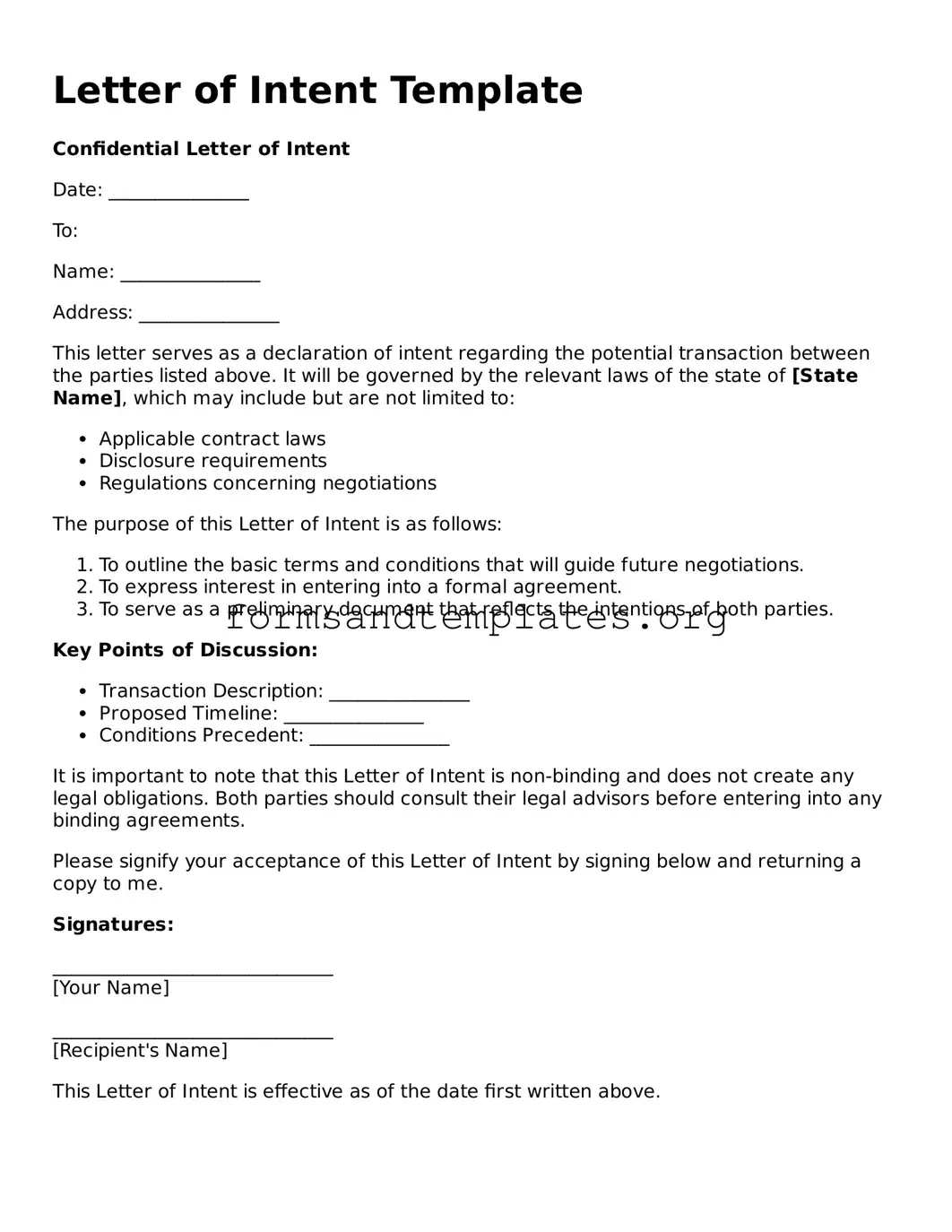Letter of Intent Template
Confidential Letter of Intent
Date: _______________
To:
Name: _______________
Address: _______________
This letter serves as a declaration of intent regarding the potential transaction between the parties listed above. It will be governed by the relevant laws of the state of [State Name], which may include but are not limited to:
- Applicable contract laws
- Disclosure requirements
- Regulations concerning negotiations
The purpose of this Letter of Intent is as follows:
- To outline the basic terms and conditions that will guide future negotiations.
- To express interest in entering into a formal agreement.
- To serve as a preliminary document that reflects the intentions of both parties.
Key Points of Discussion:
- Transaction Description: _______________
- Proposed Timeline: _______________
- Conditions Precedent: _______________
It is important to note that this Letter of Intent is non-binding and does not create any legal obligations. Both parties should consult their legal advisors before entering into any binding agreements.
Please signify your acceptance of this Letter of Intent by signing below and returning a copy to me.
Signatures:
______________________________
[Your Name]
______________________________
[Recipient's Name]
This Letter of Intent is effective as of the date first written above.
